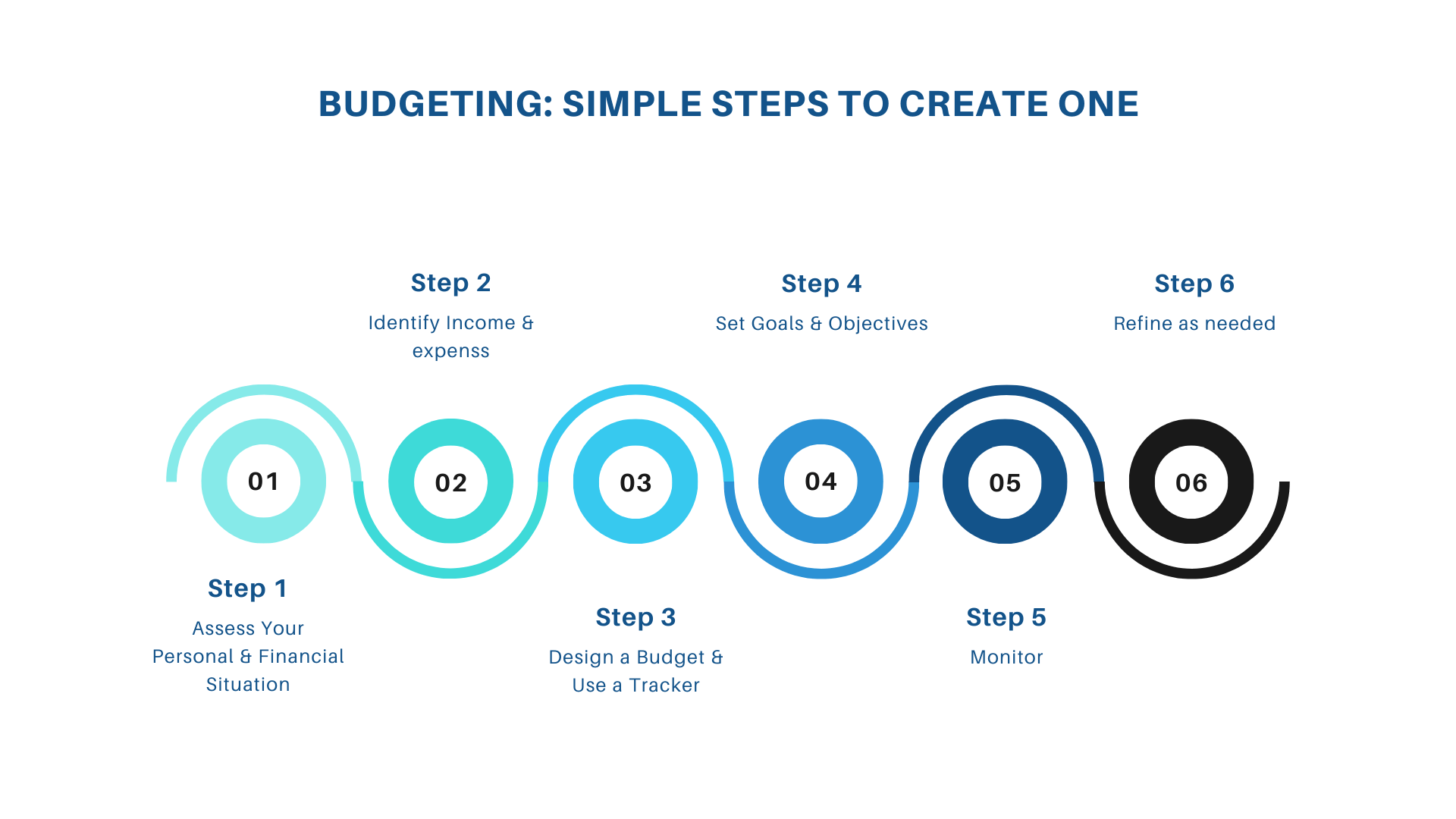Taking control of your finances is one of the most important steps toward achieving financial freedom. Whether you’re trying to pay off debt, save for the future, or simply want to manage your money better, budgeting is key. The good news is that budgeting doesn’t have to be complicated or time-consuming. With the right approach, you can start budgeting effectively and build healthier financial habits. In this blog post, we’ll go through five simple steps to help you create a budget that works for you.
Why Budgeting is Important
Before diving into the steps, let’s take a moment to understand why budgeting is crucial for financial success. A well-constructed budget helps you:
- Track your income and expenses
- Avoid unnecessary debt
- Save for emergencies and future goals
- Gain control over your spending habits
Creating and following a budget empowers you to live within your means and plan for a financially stable future. Let’s explore how you can start budgeting today.
Step 1: Understand Your Income and Expenses
The first step in creating a budget is understanding your financial situation. This involves tracking both your income and expenses.
Income:
Write down all sources of income, including your salary, side hustles, rental income, or any other money you receive. It’s important to calculate your net income (the amount you take home after taxes) to get an accurate picture of how much money you have available.
Expenses:
Next, track all of your expenses for at least one month. Break these expenses into two categories:
- Fixed Expenses: These are regular, consistent costs like rent, utilities, car payments, and insurance.
- Variable Expenses: These fluctuate each month, including groceries, entertainment, dining out, and shopping.
By identifying where your money goes each month, you can see areas where you might need to cut back or save.
Step 2: Set Financial Goals
Now that you have a clear understanding of your financial situation, it’s time to set your financial goals. Your goals will serve as the foundation for your budget, guiding your spending and saving habits.
Short-Term Goals:
These are goals you want to achieve within the next year or two. For example:
- Building an emergency fund
- Paying off credit card debt
- Saving for a vacation
Long-Term Goals:
Long-term goals are typically 5 years or more into the future. These can include:
- Saving for retirement
- Buying a home
- Building a college fund for your children
Once your goals are clearly defined, you can allocate your income more effectively. Remember to prioritize goals that are most important to you, and make sure your budget reflects them.
Step 3: Create a Budget Plan
With your income, expenses, and goals in mind, it’s time to create a budget plan. The simplest way to do this is by using the 50/30/20 rule, which allocates your income as follows:
- 50% for Needs: Essentials like rent, utilities, groceries, and transportation.
- 30% for Wants: Non-essential expenses like dining out, entertainment, and hobbies.
- 20% for Savings and Debt Repayment: Focus on building your savings and paying off high-interest debt.
If your current expenses don’t fit neatly into these categories, don’t worry. Adjust the percentages to reflect your financial goals. For example, if paying off debt is a priority, you might allocate more than 20% of your income toward debt repayment.
Step 4: Automate Your Savings
One of the best ways to stick to a budget and save consistently is by automating your savings. This ensures that a portion of your income is set aside before you have a chance to spend it.
You can set up an automatic transfer from your checking account to a savings account on payday, making saving effortless. Aim to save at least 20% of your income, or whatever amount works best for your financial goals. Consider setting up multiple savings accounts for different purposes, such as an emergency fund, vacation fund, or home purchase fund.
Step 5: Review and Adjust Your Budget Regularly
Your financial situation is not static, so your budget shouldn’t be either. It’s important to review and adjust your budget on a regular basis. For instance:
- If you get a raise, decide how to allocate the extra income (e.g., increasing savings or paying off debt faster).
- If your expenses increase, figure out where to cut back to avoid overspending.
- If you reach a financial goal, set a new one to keep your budget focused.
Set a monthly or quarterly reminder to review your budget and make any necessary changes. Regularly monitoring your spending habits ensures that your budget stays relevant and effective.
Bonus Tips for Successful Budgeting
- Use Budgeting Apps: Consider using budgeting apps like Mint, YNAB (You Need A Budget), or PocketGuard to track your spending and savings automatically. These apps can help you stick to your budget more effectively.
- Cut Unnecessary Expenses: If you find yourself overspending, consider cutting back on non-essential items like dining out, subscriptions, or impulse purchases.
- Build an Emergency Fund: Having 3-6 months of living expenses saved up will give you peace of mind in case of unexpected financial challenges like job loss or medical bills.
- Stick to Cash for Discretionary Spending: Use cash for non-essential spending (wants) to avoid overspending. When the cash runs out, you stop spending.
Conclusion: Take Control of Your Finances with Budgeting
Budgeting doesn’t have to be overwhelming. By following these five simple steps—understanding your income and expenses, setting financial goals, creating a budget plan, automating your savings, and reviewing your budget regularly—you’ll be well on your way to taking control of your finances.
Remember, budgeting is about building healthy financial habits and being proactive about your money management. With the right plan in place, you can achieve your financial goals and feel confident about your future.


